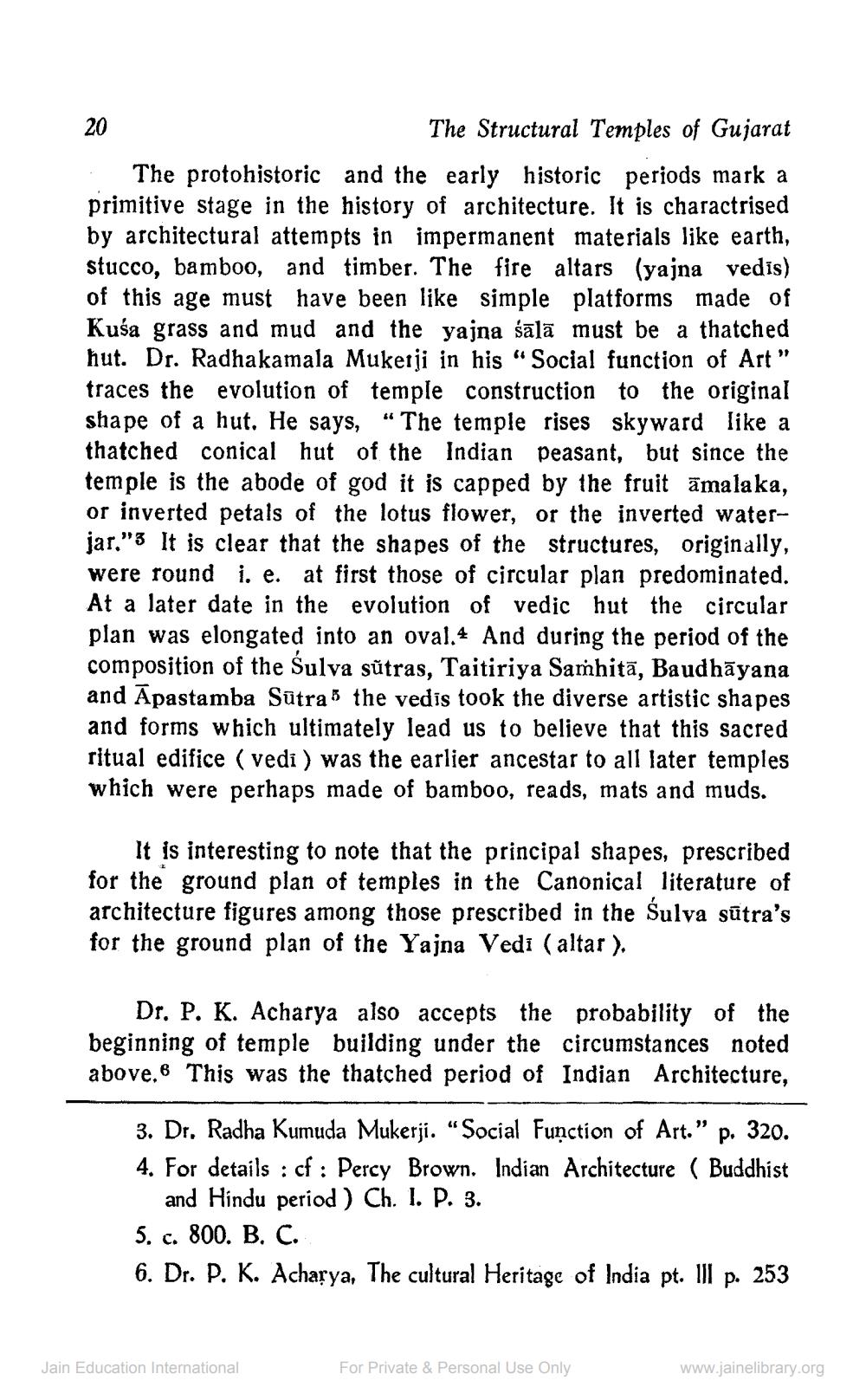________________
The Structural Temples of Gujarat
The protohistoric and the early historic periods mark a primitive stage in the history of architecture. It is charactrised by architectural attempts in impermanent materials like earth, stucco, bamboo, and timber. The fire altars (yajna vedis) of this age must have been like simple platforms made of Kusa grass and mud and the yajna śālā must be a thatched hut. Dr. Radhakamala Mukerji in his "Social function of Art" traces the evolution of temple construction to the original shape of a hut. He says, "The temple rises skyward like a thatched conical hut of the Indian peasant, but since the temple is the abode of god it is capped by the fruit amalaka, or inverted petals of the lotus flower, or the inverted waterjar." It is clear that the shapes of the structures, originally, were round i. e. at first those of circular plan predominated. At a later date in the evolution of vedic hut the circular plan was elongated into an oval. And during the period of the composition of the Sulva sutras, Taitiriya Samhita, Baudhāyana and Apastamba Sutra the vedis took the diverse artistic shapes and forms which ultimately lead us to believe that this sacred ritual edifice (vedi ) was the earlier ancestar to all later temples which were perhaps made of bamboo, reads, mats and muds.
20
It is interesting to note that the principal shapes, prescribed for the ground plan of temples in the Canonical literature of architecture figures among those prescribed in the Sulva sūtra's for the ground plan of the Yajna Vedi (altar).
Dr. P. K. Acharya also accepts the probability of the beginning of temple building under the circumstances noted above. This was the thatched period of Indian Architecture,
320.
3. Dr. Radha Kumuda Mukerji. "Social Function of Art." p. 4. For details: cf: Percy Brown. Indian Architecture (Buddhist and Hindu period) Ch. I. P. 3.
5. c. 800. B. C.
6. Dr. P. K. Acharya, The cultural Heritage of India pt. III p. 253
Jain Education International
For Private & Personal Use Only
www.jainelibrary.org




